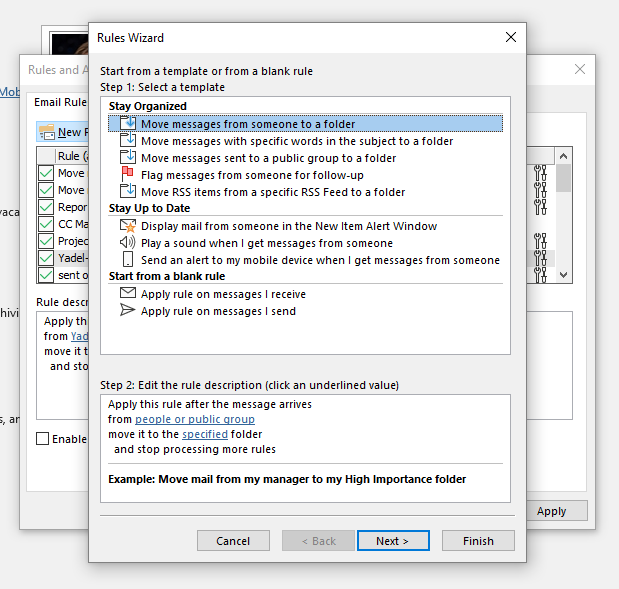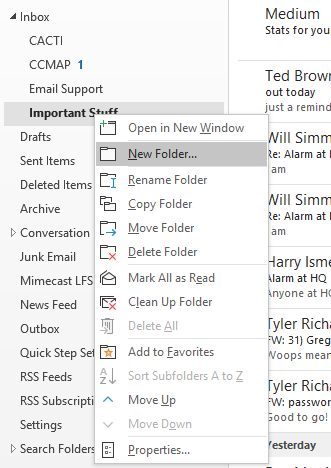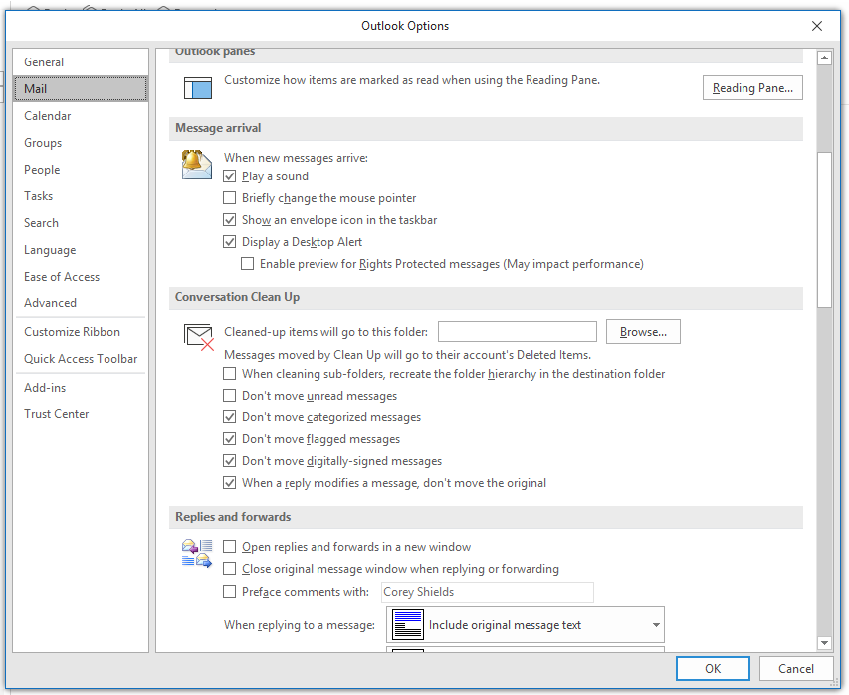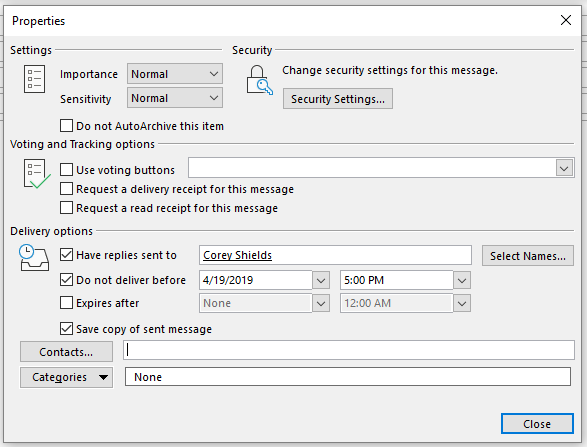In the professional world everyone uses email, and its usually Microsoft Outlook. It’s a handy mailbox management tool, but many of us are now inundated with more emails than we can read. How do we tame this monster and reach INBOX ZERO?
Inbox Zero is a very popular term these days, and we praise those among us who can keep their unread emails at a constant near-zero.
Say what?! Who does that!
Well, we have a few people here at Ntiva that have come close to it, but of course we're talking about techs who are expert at IT services and know how to help people get the most out of their applications.
But seriously, how do they do it?
We're here to share with you 4 of our best Outlook tips to help you attain Inbox Zero!
1. Rules
Let’s start with the most obvious method to managing your inbox - rules.
Outlook rules can automate the email organization you would otherwise have to spend time doing yourself.
If they’re configured properly, you’ll never have to manually click-and-drag an email to another folder again!
In Outlook, go to File > Manage Rules and Alerts. From there, you can use a template or create a new blank rule. In my personal quest for Inbox Zero, I’ve found the template rules to be sufficient.

There are a few variations to select from in the templates, but we’re focusing on three in particular:
- Move messages from someone
- Move messages with specific words in the subject
- Move messages sent to a public group
These three combinations allow for maximum customization. You can send certain senders to specific folders, or group similar subjects in one place.
Rules keep the important emails front and center, without the clutter.
Don’t just rely on Outlook’s new Focused Inbox to keep you sane! If you want complete, in-depth control over your mailbox, you’re going to need rules.
Pro tip: Create a new subfolder (see the next tip!) labeled “NEWSLETTERS” and use the “sent to public group” option to automatically send all of your subscriptions to a dedicated inbox folder!
2. Subfolders
The default folders - Inbox, Sent, Drafts, Deleted Items - are not enough!
You need to divide up that inbox to make sure the necessary emails are always easy to find and stored where you need them to be.
Creating subfolders in Outlook is a breeze, simply right-click your inbox and choose New Folder.

How you divvy up your mailbox is your call.
Some use folder labels like “Important” and “Can Wait.” Others group by people, using names of bosses or family members to keep things organized by conversation.
It doesn’t really matter how you split things up, just that you do it!
When combined with the rule tips listed above, subfolders can drastically help your mailbox organization. It’s like adding walls inside of a new house! Knowing where specific things go helps maximize space and efficiency.
One giant folder to receive all of your incoming mail ensures that you’ll never get to everything you need to without being interrupted by something else.
Pro Tip: Create subfolders of your subfolders for the ultimate email organization! The process is the same as above, just right-click the folder you want to place the subfolder in, and choose New Folder.
3. Clean Up
Clean Up won’t bring your inbox to zero, but it will save you some serious time and effort if you’re coming back from a break, or are just beginning to tackle the thousands of unread emails in your mailbox.
You can configure Clean Up to send all of the emails it sweeps away to a specific folder.
By default, this is the Deleted Items, but you can move them anywhere. Just make sure you remember to empty that Deleted Items folder every once in a while, to keep your mailbox size down!

To configure this automated email janitor, simply Right Click your inbox, select Clean Up Folder, and then Settings.
You can choose what kind of emails you don’t want moved, and select where the chosen emails disappear to.
Pro Tip: Right-clicking your inbox and selecting “Clean Up” after a vacation is nothing short of amazing. Doing this immediately after being away from your mailbox for a few days guarantees that you won’t see any duplicates or unnecessarily long email strings while clearing everything out!
4. Delayed Delivery
While this tip doesn’t have an affect on your actual mailbox, it does save you time and stress, giving you more time to attack that ever-growing unread email list.
Say you need an email sent out first thing in the morning, but you’re not exactly an early bird. Maybe there’s a special communication that you need to hit a client’s mailbox at a specified hour.
Delayed delivery makes it possible!

The next time you don’t want to send an email immediately, select Options in the message toolbar, and choose Delay Delivery.
This way, you can type out your email and get it off your checklist whenever you have the time.
Pro Tip: Instead of sending something at the very end of the day, schedule the delivery for early the next morning. This will guarantee that your email shows up near the top of the recipient’s inbox, instead of being buried by overnight communications.
With just a few small changes, you can be closer to a manageable mailbox. Yes, it does take some time to set this up, but it can save you literally hundreds of hours through out the year.
Inbox zero is closer and easier than you think!
Do your employees have access to rock star techs on 24x7 basis? Would you like to make your staff far more productive with the technology they have at hand? Consider learning more about what Ntiva can do for your business by checking out our full range of IT services plans.




